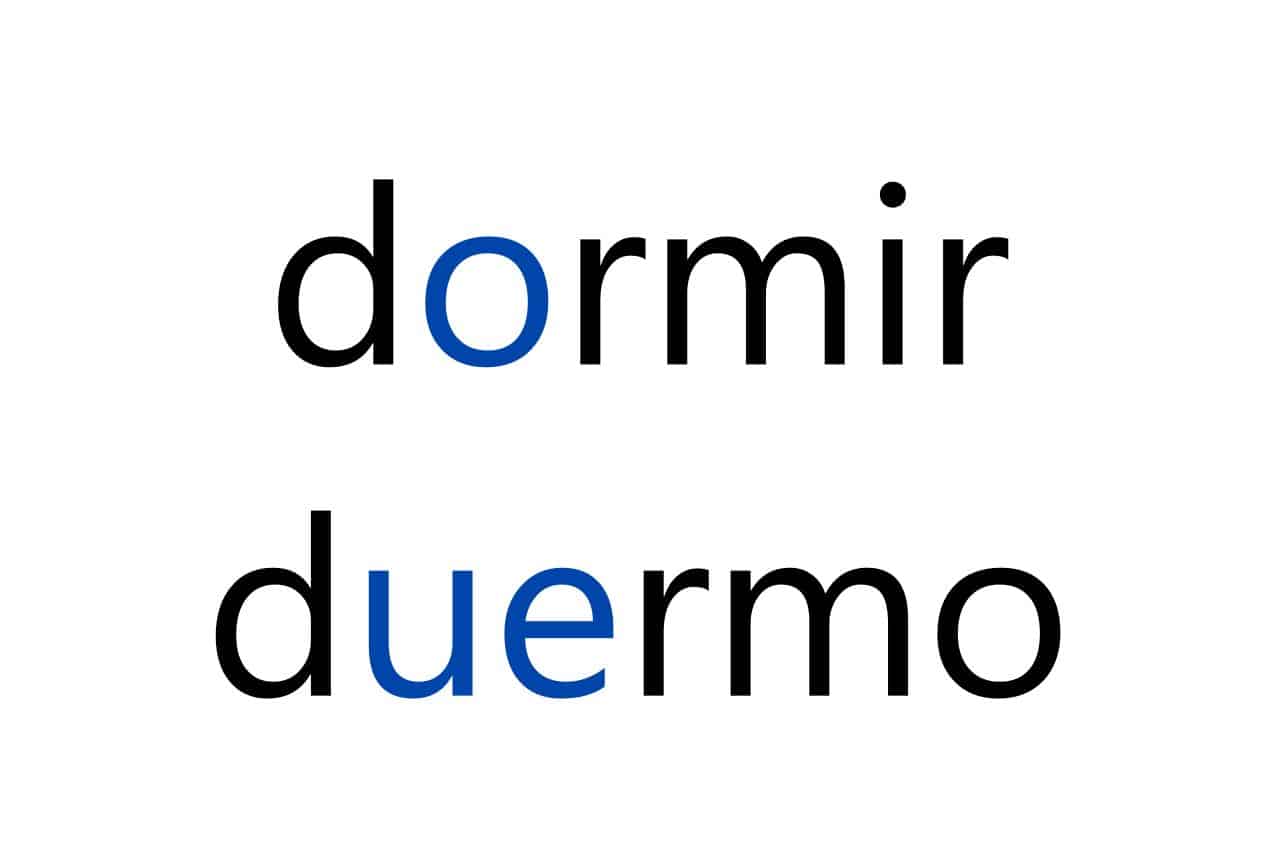
In the transition from the infinitive to the first person singular of the verb "sleep" the apophony is appreciated.
Apophony is the change in vowel timbre that, based on phonetic evolution, is recorded in words that share the same root .
phonetic phenomenon
Apophony is a phonetic phenomenon that involves a modification in the quality or duration of the sound of the vowel that is in the root , especially when said root has another root or a prefix before it.
In other words, this phonetic phenomenon involves an alteration of the timbre of the vowel according to the context. This is a characteristic of Latin that, in some cases, came to Spanish by inheritance .
In some cases, such vowel changes may have grammatical or semantic implications, beyond phonetics . Apophonia can manifest itself in different ways, such as vowel changes, addition or deletion of vowels, or changes in the quality or length of vowel sounds. These can occur in different contexts, such as verbal conjugation, the formation of plurals, the comparison of adjectives and the derivation of words, among others.
Examples
Apophony can be found in various aspects of language , such as verbal conjugation, the formation of plurals and the comparison of adjectives. All this can be seen in the examples that we present below. Let's start with two verbs in the present indicative : Spanish verbs often show apophony in their conjugation in this tense, as can be seen in the case of cantar (infinitive) / canto (first person singular) and sleep (infinitive) / I sleep (first person singular).
On the other hand, we can take a look at two cases in which apophony occurs in the verbal roots in irregular conjugation : some verbs in our language present vowel changes in their roots in certain verbal forms, as can be seen in the case of asking (infinitive) / I ask (first person singular present indicative) and closing (infinitive) / cierro (first person singular present indicative).
We also find it in nouns that change when going from singular to plural : this type of apophony can be seen in changes such as man (singular) / men (plural) and foot (singular) / feet (plural). With respect to adjectives , it is given by comparing their degrees, as occurs with good (positive) / better (comparative) / the best (superlative) and great (positive) / greatest (comparative) / the greatest (superlative).
Take the case of the Latin verb “habere” (i.e. “to have” ). In our language it gave rise to words like “habit” and “have” (with an A after the H ), but also to “prohibit” or “inhibit” (where the A became I ). Apophony also appears in processes of term formation such as the one that registers “insulso” (lacking salt): due to this phenomenon, the correct notion is not “insulso” .
It is easy to appreciate how apophony works in the English language if we pay attention to what happens with “man” and “men” . “Man” is a noun that refers to a “man” (singular), while “men” constitutes its plural ( “men” ). In this case the apophony led to the replacement of the A by the E.

The gradation of adjectives also gives rise to apophony.
Etymology
The word apophony comes from the ancient Greek apophonesis , composed of the terms apo meaning "of" or "far from", and phonos which translates as "sound" or "voice."
This term was coined by linguists in the 19th century to describe a phenomenon found in many languages, where vowels or vowel sounds change within a word to indicate different grammatical forms or meanings.
It is important to note that apophony is also known as ablaut in the Anglo-Saxon linguistic tradition, although in academic terminology the term apophony is more commonly used.
